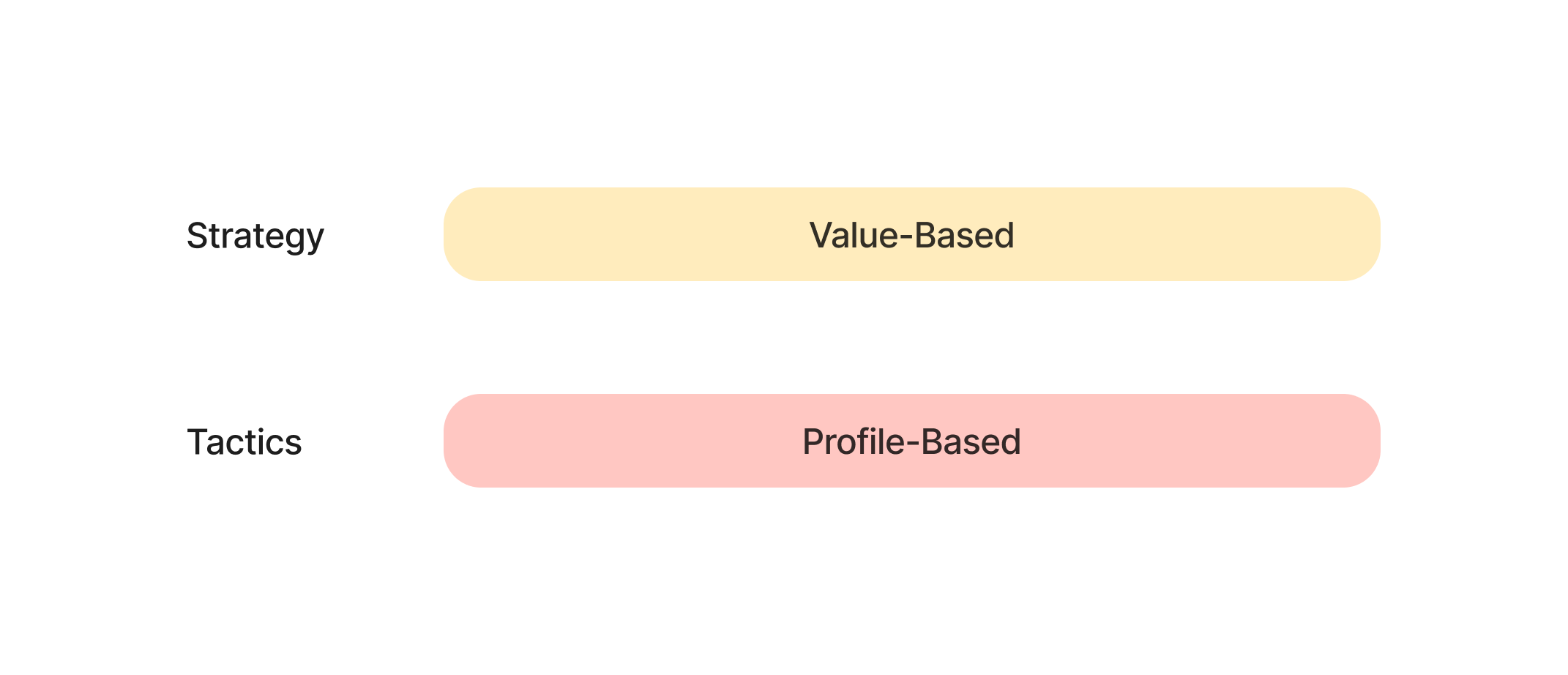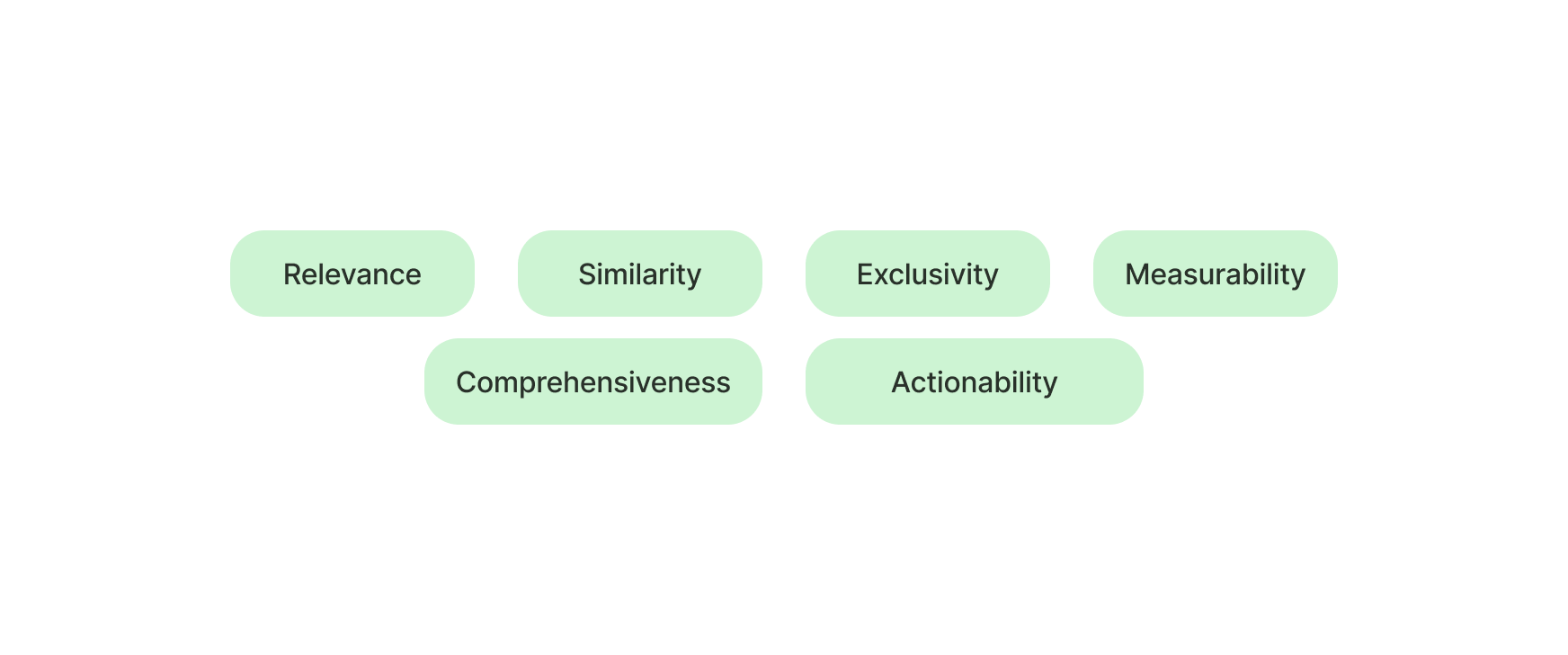Not all customers deliver the same value, and with limited money and resources, marketing to everyone is neither efficient nor effective. Customer segmentation is grouping customers based on shared characteristics to find the customers who deliver the most value, but true success goes beyond this basic definition. It requires a strategic and tactical approach that aligns with market dynamics, brand positioning, and audience targeting. Effectively reaching the right customer segment enhances cost-efficiency and marketing performance, but hinges on carefully balancing these factors. While segmentation can be complex, the following principles, rooted in over a century of marketing strategy provide a structured approach to capturing the right segments.
Needs, Resources, and Superior Value
The goal of your segmentation should be to find the customers that are located in the intersection where your company, collaborators, and customers overlap to capture the greatest shared value, called superior value. This is where your unique value proposition sets you apart from your competition. At this point, you meet your customer's needs, and in return, your customers generate value for your company and collaborators. Capturing this segment goes beyond simply identifying a target audience. It is a structured process that begins with understanding your market and segmentation capabilities, followed by developing a strategic approach and then refining it through tactical execution.
Differentiation and Agglomeration of Markets

To find the segmentation sweet spot, the process begins by understanding the natural dynamics of your market, which will determine whether segmentation occurs through differentiation or agglomeration.
Differentiation is commonly applied in mass markets, where consumers share similar needs and the brand takes the lead in defining and segmenting its target audience. Sports apparel is a great example of this, as companies create products for broad, everyday fitness needs, and then refine their positioning through branding and product specialization. This approach also allows market challengers to emerge and disrupt incumbents by carving out niche audiences. For example, Lululemon and Alo successfully differentiated themselves as luxury yoga apparel brands, targeting a niche that industry giants like Nike and Adidas initially overlooked. By establishing a premium identity in a less competitive category within the vertical, they quickly became the category leaders, with incumbents struggling to steal market share despite their vast resources.
On the other end of the spectrum, agglomeration occurs when consumer choices and preferences naturally cluster into segments, rather than companies actively defining them. This consumer-led segmentation process happens in mature markets, where strong customer affinities dictate brand positioning. A good example is the gaming console industry, where consumers align themselves with brands like PlayStation and Xbox, forming distinct loyalty-based segments. In these cases, brands focus on optimizing their products based on the wants and needs of their existing customers rather than attempting to redefine the market.
Value and Profile Segmentation

After determining the segmentation approach based on the market, targeting involves a two-step process of value-based segmentation (strategy) and profile-based segmentation (tactics).
Value-based segmentation is the foundation of targeting, focusing on identifying the segments your company can serve effectively. To do this, you need to determine which customer segments align with the superior value previously mentioned while keeping in mind your company goals. The value you seek can be monetary like revenue, cost, and lifetime value, or strategic like product-line expansion, scale value, network effects, or attracting lead users. The outcome of determining the value is a clear understanding of which segments to prioritize and which to exclude from your marketing segments. However, arriving at this decision alone doesn’t help you with targeting because these are largely characteristics that aren’t observable in your customers.
To find the observable characteristics, you need to use profile-based segmentation, which refines your target with demographic, and behavioral characteristics such as age, gender, purchase frequency, income, and order value. This tactical step helps you find your target segment. Techniques like decision trees, random forests, and XGBoost can be used to classify these behaviors, identifying patterns that provide actionable insights with strong predictive power. By the end of this process, you have a clearly defined segment or segments that should align with the superior value that you identified and set you up for success with your marketing campaign.
Segmentation Principles

Before embarking on this journey, it’s crucial to keep six principles in mind when evaluating each stage to identify the optimal segment: relevance, similarity, exclusivity, comprehensiveness, measurability, and actionability.
- Relevance refers to the likelihood of customers responding positively to a company offering.
- Similarity involves identifying individuals with homogenous preferences that align with your brand’s value proposition.
- Exclusivity ensures the segment is distinct from others, capturing a unique group of customers with needs that set them apart.
- Comprehensiveness ensures the segment is large enough to be viable, while still being meaningful and specific.
- Measurability reflects your ability to track and assess the segment’s effectiveness over time.
- Actionability is how easily you can target and engage the segment through your marketing efforts.
Marketing Effectively
Effective customer segmentation is more than grouping your audience. It is about identifying the intersection where value among company value, customer needs, and market opportunities align. While complex, it is a necessary process that, when executed correctly, serves as a roadmap for more effective marketing. By delivering superior value to the right customers you can maximize your return on investment and drive sustainable growth. Continuously refining your segmentation approach will not only help you stay ahead of the competition but also position you for long-term success.